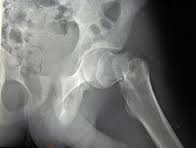Characterization of the hip fracture operated before twenty-four hours in Pinar del Río
Keywords:
Hip fractures/complications, Comorbidity.Abstract
Background: hip fracture is a common cause of hospitalization in emergency orthopedic services.
Objective: to characterize the behavior of the operated hip fracture before the 24 hours during January 2012 to January 2014 period.
Methods: a descriptive, prospective, longitudinal study conducted at Abel Santamaria Cuadrado General Teaching Hospital. Target group: 652 patients attending Emergency Orthopedic Room. Sample: 634 operated patients chosen according to the inclusion and exclusion criteria. Descriptive statistics and chi squared test were used.
Results: 29.2% were between 80 and 85 years old; 65.8% women (χ2 = 64.27; p = 1.08 E-15). Only 14.0% presented no comorbidities; 56.2% suffered from complications: anemia 51.1%, contusion 45.1% and 28.8% diabetes mellitus decompensation; 8.5% of them presented pulmonary embolism.
Conclusions: female patients between 80-85 years old predominated, with frequent comorbidities. More than half had some complication: anemia, contusion and diabetes mellitus decompensation were the most common clinical disorders, on the surgical region cellulitis and wound infection prevailed. Pulmonary embolism remains a high rate.
Downloads
References
1. Negrete Corona J, Alvarado Soriano JC, Reyes Santiago LA. Fractura de cadera como factor de riesgo en la mortalidad en pacientes mayores de 65 años: Estudio de casos y controles. Acta Ortop Mex [Internet]. 2014 [citado 5 oct 2015]; 28(6): 352-62. Disponible en: http://www.scielo.org.mx/scielo.php?script=sci_arttext&pid=S2306-41022014000600003&lang=pt.
2. Chelala Friman CR.¿Será la fractura de cadera la epidemia del siglo XXI?. CCM [Internet]. 2013 [citado 5 Oct 2015]; 17(2): 2. Disponible en: http://scielo.sld.cu/scielo.php?script=sci_arttext&pid=S1560-43812013000200013&lang=pt.
3. González López AM, Vázquez Cruz E, Romero Medina JL, Gutiérrez Gabriel I, Montiel Jarquín AJ, et al. Síndromes geriátricos en pacientes con fractura de cadera no reciente en una unidad de primer nivel de atención médica. Acta Ortop Mex [Internet]. 2014 [citado 5 oct 2015]; 28(5): 287-90. Disponible en: http://www.scielo.org.mx/scielo.php?script=sci_arttext&pid=S2306-41022014000500004&lang=pt.
4. Quesada Musa JV, Delgado Rifa E, Tórrez Vásquez D, Gómez Silva Y. Morbilidad y mortalidad por fractura de cadera. Rev Cubana Ortop Traumatol. 2011 jul – dic;25(2):136-48. Disponible en: http://scielo.sld.cu/scielo.php?pid=S0864-215X2011000200004&script=sci_arttext
5. Gerber Y, Melton LJ 3rd, Weston SA, Roger VL. Osteoporotic fractures and heart failure in the community. Am J Med. 2011 May;124(5):418-25. Disponible en: http://www.amjmed.com/article/S0002-9343%2811%2900098-2/fulltext
6. Karantana A, Boulton C, Bouliotis G, Shu KS, Scammell BE. Epidemiology and outcome of fracture of the hip in women aged 65 years and under: A COHORT STUDY. J Bone Joint Surg Br. 2011 May;93(5):658-64.
7. Mackey DC, Hubbard AE, Cawthon PM, Cauley JA, Cummings SR. Usual physical activity and hip fracture in older men: an application of semiparametric methods to observational data. Am J Epidemiol. 2011 Mar;173(5):578-86. Disponible en: http://aje.oxfordjournals.org/content/173/5/578.long
8. Martínez López R, Moreno Navarro J, Goide Linares E, Fernández García D. Caracterización clinicoepidemiológica de pacientes con fracturas de cadera. Medisan [Internet]. 2012 feb [citado 5 Oct 2015]; 16(2): 5. Disponible en: http://scieloprueba.sld.cu/scielo.php?script=sci_arttext&pid=S1029-30192012000200005&lng=es&nrm=iso.
9. Valles Figueroa JF, Malacara Becerra M, Gómez Mont Landerreche G, Suárez Ahedo CE, Cárdenas Elizondo JL. Tratamiento quirúrgico de las fracturas de cadera. Acta Ortopédica Mex. 2010;24 (4):242-7. Disponible en: http://www.medigraphic.com/pdfs/ortope/or-2010/or104f.pdf
10. Ma RS, Zhang Y, Huang X, Zhu D, Gu GS, Yang GT, et al: Causes of death after hip fracture in senile patients. Chin J Traumatol. 2012; 15(1): 42-9.
11. Nikkel BA, Fox EJ, Black KP, Davis C, Andersen L, Hollenbeak CS. Impact of comorbidities on hospitalization costs following hip fracture. J Bone Joint Surg Am. 2012 Jan;94(4):9-17. Disponible en: http://jbjs.org/content/94/1/9.lon
12. Cummings-Vaughn LA, Gammack JK. Falls, osteoporosis, and hip fractures. Med Clin North Am. 2011 May;95(3):495-506. Disponible en: https://www.clinicalkey.es/#!/content/playContent/1-s2.0-S0025712511000174?returnurl=http:%2F%2Flinkinghub.elsevier.com%2Fretrieve%2Fpii%2FS0025712511000174%3Fshowall%3Dtrue&referrer=http:%2F%2Fwww.ncbi.nlm.nih.gov%2Fpubmed%2F21549874
13. Van Houwelingen AP, Duncan CP (2011) The pseudo A(LT) periprosthetic fracture: it’s really a B2. Orthopedics 2011; 34(9):e479– e481
14. Even JL, Richards JE, Crosby CG, Kregor PJ, Mitchell EJ, et al. Preoperative skeletal versus cutaneous traction forfemoral shaft fractures treated within 24 hours. J Orthop Trauma.2012;26(10):e177–82.

Published
How to Cite
Issue
Section
License
Authors who have publications with this journal agree to the following terms: Authors will retain their copyrights and grant the journal the right of first publication of their work, which will be publication of their work, which will be simultaneously subject to the Creative Commons Attribution License (CC-BY-NC 4.0) that allows third parties to share the work as long as its author and first publication in this journal are indicated.
Authors may adopt other non-exclusive license agreements for distribution of the published version of the work (e.g.: deposit it in an institutional telematic archive or publish it in a volume). Likewise, and according to the recommendations of the Medical Sciences Editorial (ECIMED), authors must declare in each article their contribution according to the CRediT taxonomy (contributor roles). This taxonomy includes 14 roles, which can be used to represent the tasks typically performed by contributors in scientific academic production. It should be consulted in monograph) whenever initial publication in this journal is indicated. Authors are allowed and encouraged to disseminate their work through the Internet (e.g., in institutional telematic archives or on their web page) before and during the submission process, which may produce interesting exchanges and increase citations of the published work. (See The effect of open access). https://casrai.org/credit/


